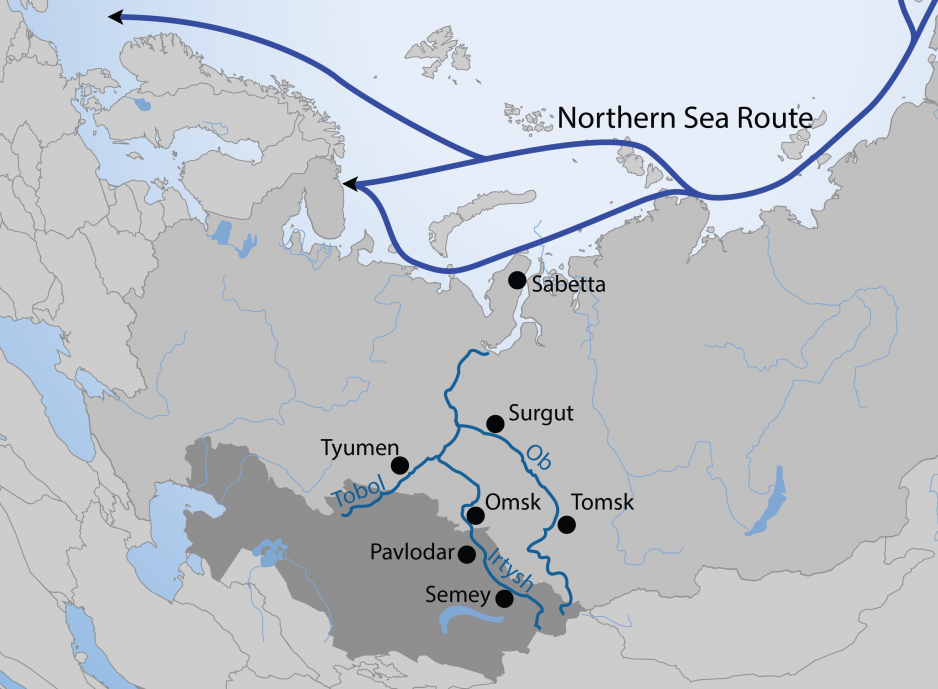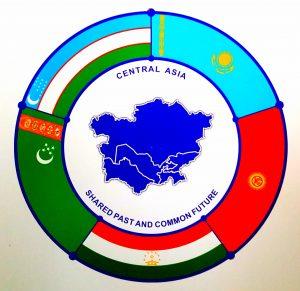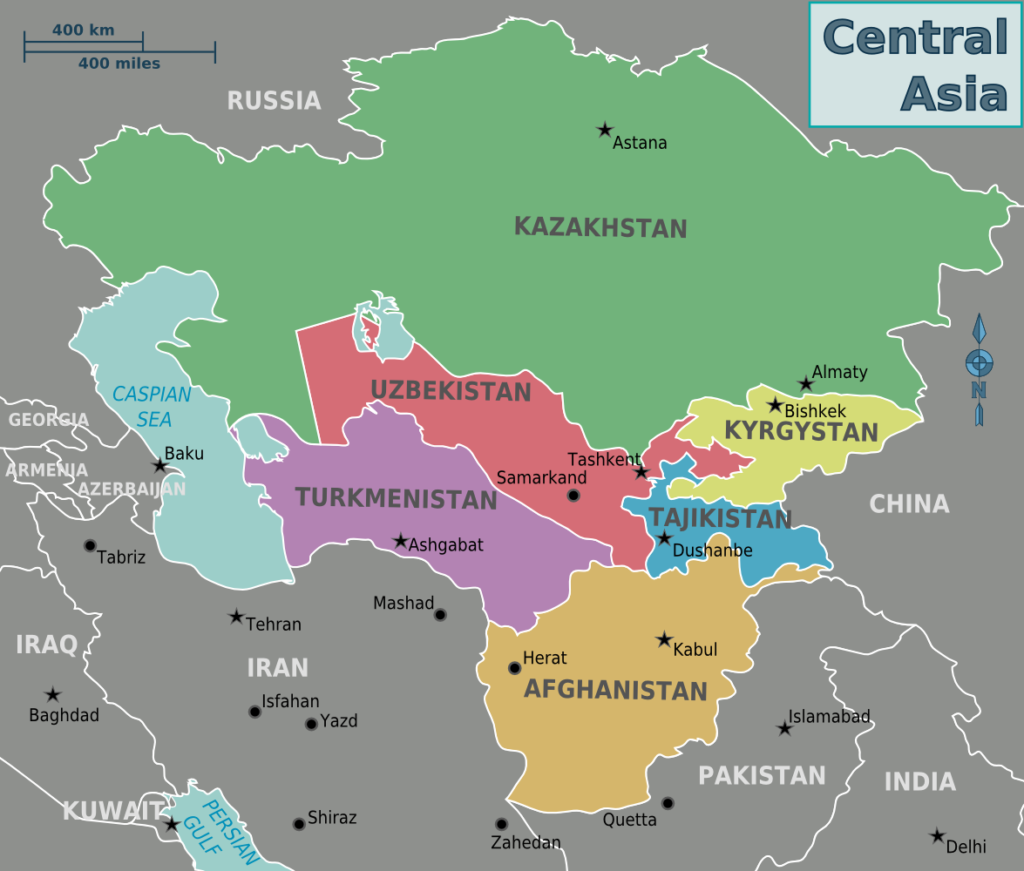From Gefira Via ZeroHedge:
The five post-Soviet Central Asian republics – Kazakhstan (19 mln inhabitants), Kyrgyzstan (6), Tajikistan (8,5), Uzbekistan (30) and Turkmenistan (5) – making up a joint area of almost 4 million square kilometers (by roughly one million larger than the area of India or Argentina), with the total population equalling 68 million (comparable to that of France or Great Britain) is a very important spot on the globe, landlocked between Russia, China, Pakistan, Afghanistan and Iran.
In the 19th century it was the Russian and the British that penetrated the area and vied for dominance there: the former from the north-west, the latter from the south-east. Their rivalry received the name of the Great Game. The five countries were a sort of colonies of the Russian Empire, though – due to the territorial proximity – incorporated into it. The indigenous populations – confessionally, linguistically and racially entirely alien to European, orthodox Russians – would pose problems occasionally, which twice morphed into an open uprising against Russian rule: in 1916 and in between 1923-24. Both attempts were quelled, which resulted in the loss of many lives and massive emigration. Bishkek, Kyrgyztan’s capital, was then renamed to Frunze, to honour the Soviet general who had vanquished the insurgents.
While the people of Kazakhstan, Kyrgyzstan, Uzbekistan, Turkmenistan and Tajikistan had no political representation in the Russian Duma under the tsars, they enjoyed it during the time of the Soviet Union; at that time they also exercises a sort of statehood, albeit within the framework of the communist superstate. In the 1980s they constituted the bridgehead for Soviet troops invading Afghanistan. The scars left by the Russians did not really heal: they were only allayed for a time. When the Soviet Union collapsed, the five republics declared independence, and began gravitating towards the United States.
Central Asia. Source: Wikipedia.
At present the five Central Asian states are in the cross hairs of such potent players as Russia, China and the United States. Also Turkey, due to the commonality of the religion and the ethnic relationship (notice the overlap of the demonyms Turkey and Turkmenistan), plays a certain role in the region. The residents of this area seek employment in Russia or let themselves be recruited to fight in Syria against Bashar al-Assad backed by Russia. The collective historical consciousness is fraught with bitter memories of Russians fighting against the forefathers of today’s residents of the area and of Russians combating their brothers in faith in Afghanistan four decades ago. That is something that Washington has been trying to skilfully exploit. To this purpose the United States created the C5+1 political initiative that combines the effort of the five countries and those of the United States to stymie terrorism, boost economic growth and foster the human rights in the region, as the official documents and statements say........MORE
Possibly related:
Market Differentiation: "Kazakh leader may drop the 'stan' in Kazakhstan"
One of these is not like the others:From Reuters...MORE

"The New New Great Game: Geography, Energy, The Dollar and Gold"
Just about the time 'the 'stans' start receding from the Western headlines it is probably most important to think about them....
Go North Young Man: "Kazakhstan Looks To The Arctic For A New Trade Route"

The Ob’-Irtysh river system and the Northern Sea Route. (Source: Author’s own work)

